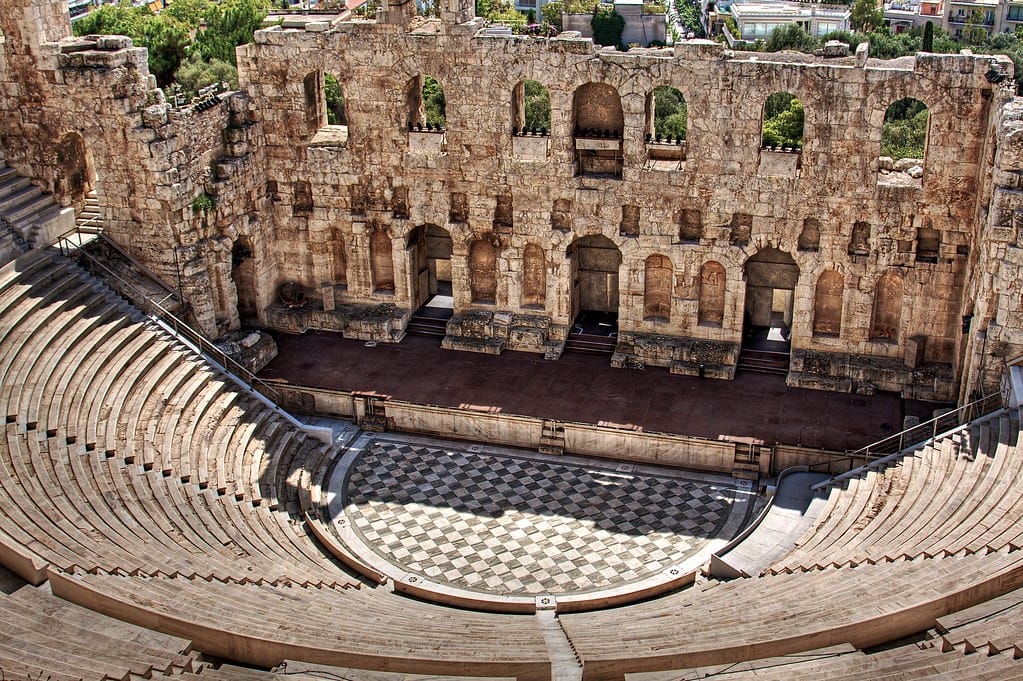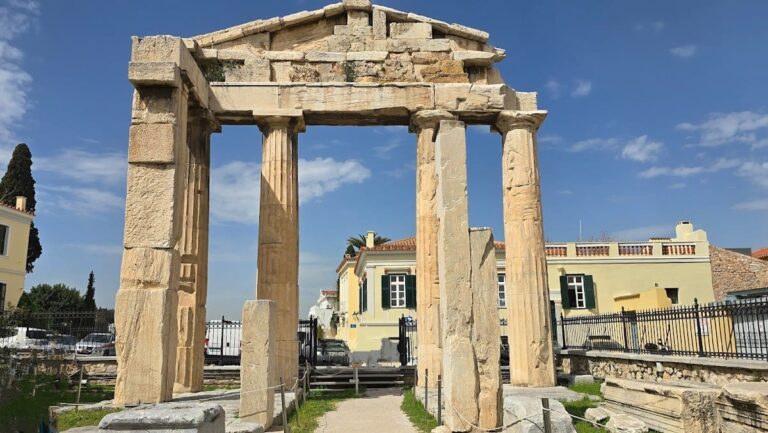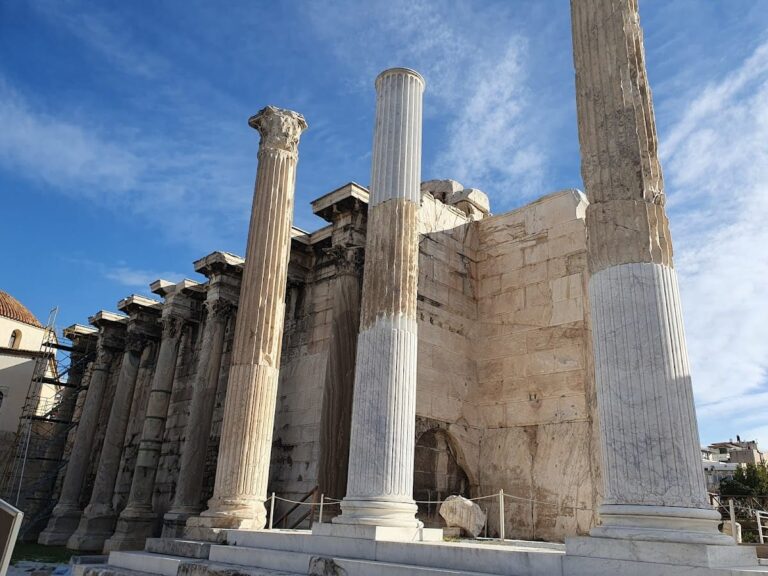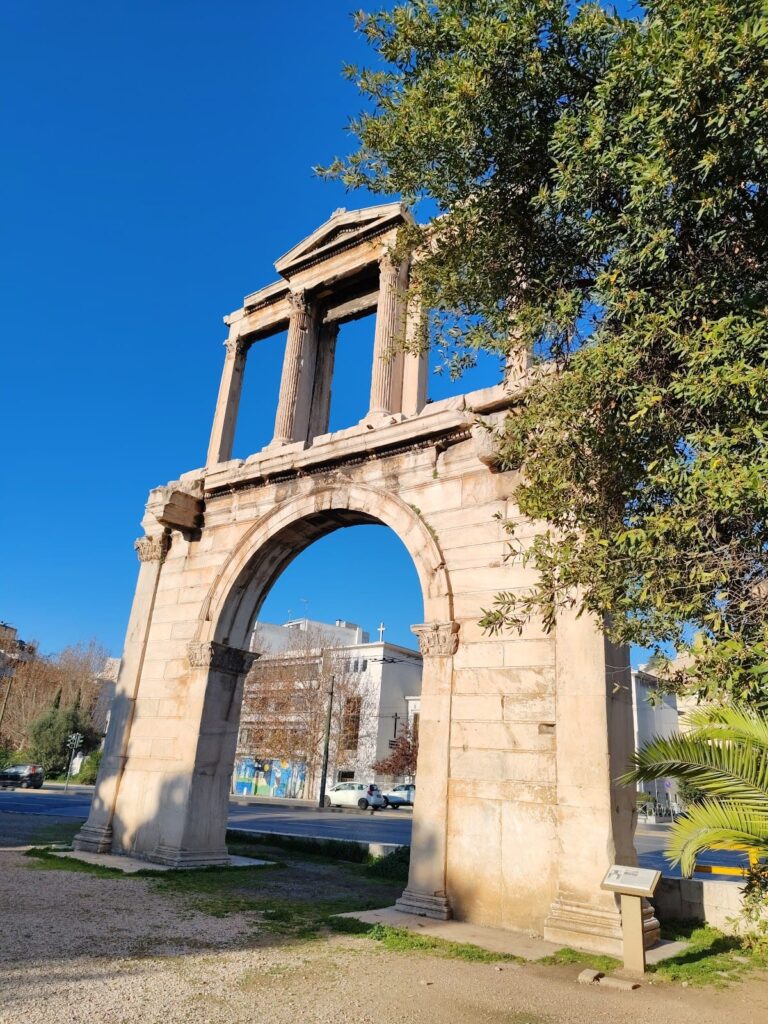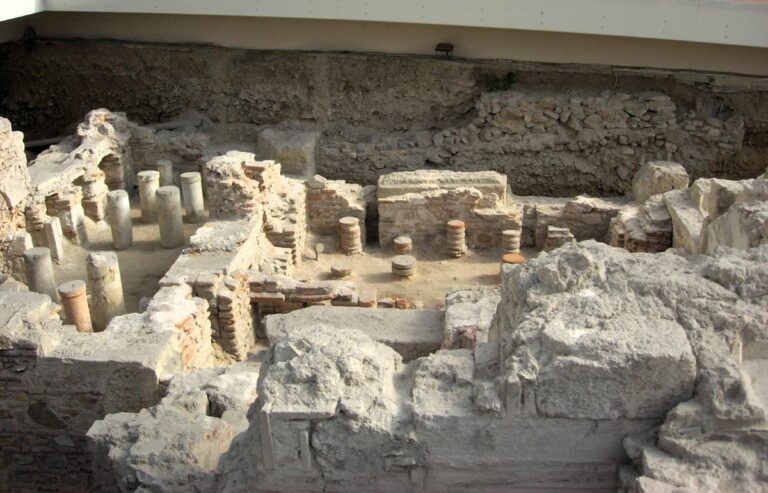Odeon of Herodes Atticus: A Historic Roman Theater in Athens
Visitor Information
Google Rating: 4.9
Popularity: High
Google Maps: View on Google Maps
Official Website: odysseus.culture.gr
Country: Greece
Civilization: Roman
Remains: Entertainment
History
The Odeon of Herodes Atticus stands on the southwestern slope of the Acropolis hill in Athens, Greece. It was built by Herodes Atticus, a wealthy Athenian orator, around 161 AD. The construction served as a memorial to his wife Regilla, who passed away in 160 AD. This odeon was the third of its kind in Athens, following earlier structures commissioned by Pericles and Agrippa. Its creation likely responded to the collapse of Agrippa’s odeon roof around 150 AD.
Before the odeon’s construction, the site hosted a sanctuary dedicated to a nymph linked to Aphrodite Pandemos, reflecting earlier religious associations during the Hellenistic and Roman eras. The odeon quickly gained renown; the traveler Pausanias, visiting in 174 AD, described it as the most impressive odeon in Greece. The writer Philostratus praised its cedar wooden roof, and the monument is also referenced in the Byzantine encyclopedia known as the Suda.
About a century after its completion, the odeon suffered damage during the Herulian sack of Athens between 267 and 268 AD, when it was burned. In the following centuries, especially from the late Roman period through the 11th century, the ruins were integrated into the city’s defensive walls. These fortifications included the Rizokastro and later the Ottoman Serpentza Wall, with the odeon serving as an advanced defensive position. Archaeological finds reveal that houses and a church were built within the odeon’s remains during this time.
By the 14th century, the structure had fallen into ruin and was partially buried. Travelers of the period misidentified it variously as a bridge, a palace, or even Aristotle’s school. The correct identification as the odeon built by Herodes Atticus was first proposed by British archaeologist Richard Chandler, although he mistakenly confused its location with that of the Odeon of Pericles.
Systematic archaeological excavations began in 1849. In the 1850s, Charalampos Christopoulos and Kyriakos Pittakis led major digs that uncovered the seating tiers, inscriptions, a cannonball from the 1687 siege of Athens, various artifacts, and a female statue head. The odeon resumed cultural use in the 19th and 20th centuries, hosting a performance in 1867 honoring Queen Olga, and concerts by Camille Saint-Saëns in 1920 and Richard Strauss in 1926.
Restoration efforts in the 1950s, led by Anastasios Orlandos, repaired the seating and exterior spaces, allowing larger audiences. The founding of the Athens Festival in 1955 established the odeon as a prominent cultural venue. Since then, it has hosted many notable performers, including Maria Callas, Frank Sinatra, Nana Mouskouri, Sting, Elton John, Plácido Domingo, Luciano Pavarotti, and others. The site also served as the location for the Miss Universe pageant in 1973.
Remains
The Odeon of Herodes Atticus is a large, semi-circular theater built in the 2nd century AD. It features a seating area approximately 81 meters in diameter, oriented on the southern slope of the Acropolis. The structure could hold around 5,000 spectators. The seating was arranged in 32 rows, divided into two sections by a horizontal walkway called a diazoma, about 1.2 meters wide. At the top of the seating stood a colonnaded stoa, or covered walkway.
The orchestra, the circular space in front of the stage, measured about 19 meters across and was paved with marble slabs. Entrances to staircases inside the structure were decorated with mosaic floors featuring geometric patterns. The walls of the odeon were clad in marble, adding to its grandeur.
The stage building, known as the proskenion, was roughly 35 meters wide and constructed from white marble combined with marble from Karystos, an island known for its stone. The stage wall remains up to two of its original three stories, reaching about 28 meters in height. The facade likely displayed statues of Herodes Atticus’ family, including his wife Regilla, and members of the imperial dynasty. Inside the odeon, archaeologists found a headless male statue draped in a himation, a type of ancient Greek garment.
Despite its large size, the odeon was covered by a roof made of cedar wood, a feature praised by ancient writers. Archaeological evidence supports this, including a thin layer of ash found in the seating area, possibly from a fire. The construction was completed quickly and at great expense, which explains the monument’s monumental scale but relatively simple decorative details.
Over time, the upper marble seats were dismantled after the building was abandoned. These were reconstructed during the mid-20th century restoration efforts. The site today preserves both original and restored elements, allowing a clear understanding of its original form and function. Archaeological excavations also uncovered remains of later houses and a church built within the odeon during its use as part of the city’s fortifications in the Byzantine and Ottoman periods.
